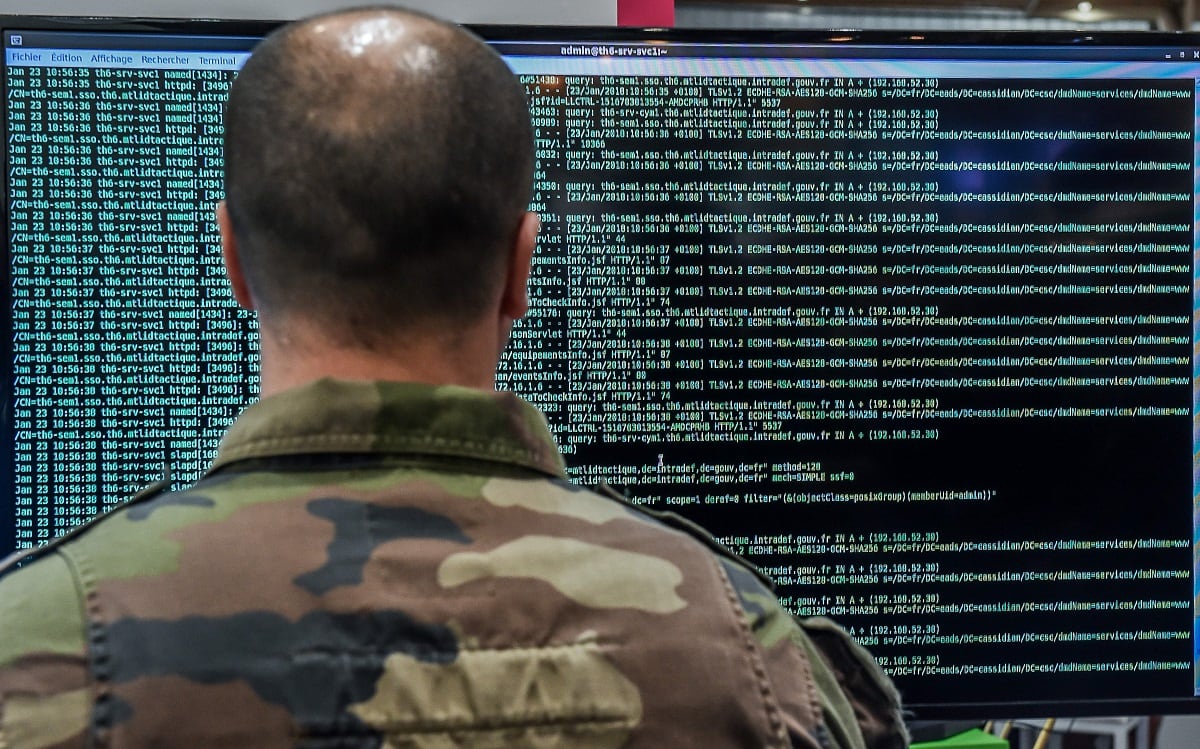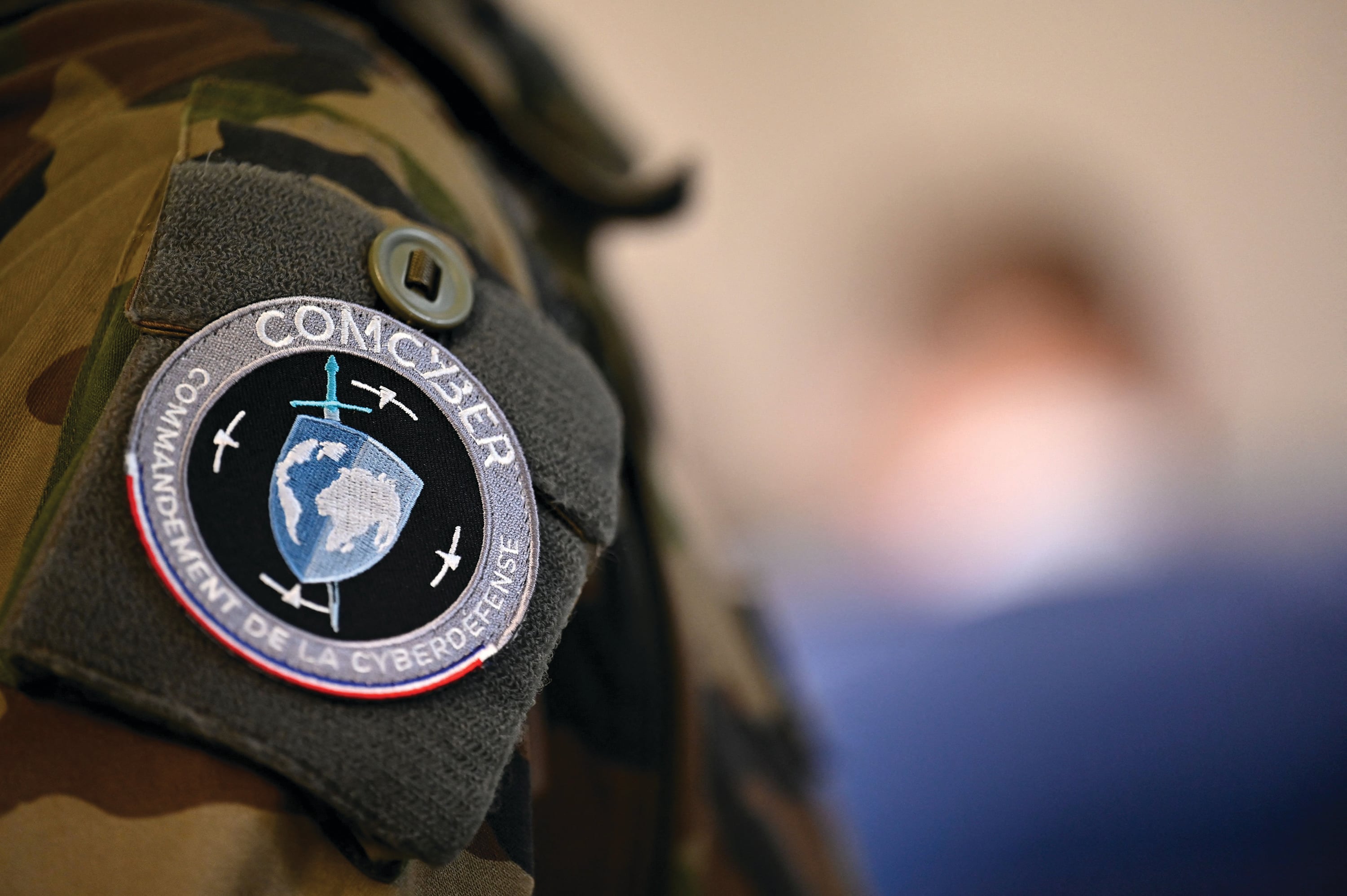STUTTGART, Germany — France foresees its future military force as heavily relying on systems of systems, whose networks are interconnected across the battlefield. From the Army’s Scorpion modernization program for new ground vehicles and communications systems to the Air and Space Force’s sixth-generation fighter in development with Germany, the increasingly connected capabilities will require evermore cybersecurity.
The head of the cyber mission for France’s defense procurement agency DGA, Chief Armaments Engineer Bruno, shared some of the nation’s key cyber priorities with Defense News.
Bruno’s last name is redacted — a request from the French Armed Forces Ministry agreed to by Defense News in order to publish this interview, which was edited for length and clarity. This interview was completed before the recent release of France’s 2023 defense budget.
France’s 2022 defense budget included about €231 million (U.S. $231.5 million) for cyber systems. What is the progress on the procurement of those cyber systems, and what more is needed to boost France’s cyber capabilities?
The equipment associated with the cyber domain covers multiple lines of effort:
- Cyber protection, including new ranges of encryption, systems to distribute and manage encryption keys, as well as the means necessary for access control, or for the exchange of classified information on various operational systems.
- Defensive cyberwarfare, including the development and procurement of attack-detection systems capable of defending our most sensitive information and weapons systems, and the tools of the defensive cyberwarfare chain — meaning the incremental modernization of systems under French cyber defense command COMCYBER to identify and anticipate the threat, carry out digital investigations and ensure the operational readiness of units.
- Influential cyberwarfare: Following the 2021 development of a doctrine in this area, 2022 is a key year to provide the armed forces with the means to monitor, track and identify adversarial maneuvers in the information field.
- Offensive cyberwarfare: in particular with an approach to integrating offensive cyber capabilities within traditional military capabilities.
These lines of efforts are implemented through a major equipment program led by the DGA, evolving in increments. The next increment is scheduled to launch at the end of 2022 and includes a key milestone for the new secure mobile telephone system benefiting the state’s highest authorities, along with an order for NATO radio encryptors for our American partners.
How is France preparing for a hybrid war? What technological investments does that include? Artificial intelligence, cloud computing and big data?
France is looking to exploit the potential of technologies in the digital domain by processing very large volumes of data as well as artificial intelligence and cloud computing information.

The Ministry of the Armed Forces established a project to bring together all of the ministerial lines of effort on artificial intelligence, resulting in the 2019 creation of a dedicated AI unit within the Defence Innovation Agency. Artemis.IA, led by the Digital Defence Agency, aims to provide the ministry with a secure and sovereign technical base for massive processing of AI-derived data and algorithms adapted to defense needs.
Other programs integrating or expected to integrate AI include the Rafale fighter aircraft for automatic target detection and reconnaissance, and the Contact radio program, with the aim of improving voice quality and halving the throughput necessary to transmit an audio feed.
In terms of cloud computing, the goal is to provide our forces with a capability to transport, share, exploit in real time, store, administer and secure data in a “plug and fight” mode with our allies and partners during a major operation, in the vein of the U.S. concept of joint all-domain command and control. This is largely driven by the SIA program, intended to provide joint C2 capabilities based on the integration and sharing of data between different domains — land, air, sea and space — and different fields — digital, electromagnetic and cyber.
How will cyber systems feature in the Army’s Scorpion and Main Ground Combat System programs, and the Air Force’s Future Combat Air System program, as the government develops and integrates more autonomous and interconnected systems?
An in-depth analysis of cybersecurity issues was carried out from the initial Scorpion design phases in order to reduce the attack surface of the system of systems to the extent possible. This incorporated protection measures at each architectural level — network segregation, securing external interfaces, authentication mechanisms, encryption, etc.
The FCAS and MGCS systems are currently both in very preliminary phases. Typically the work conducted at this stage includes studying the threat and formalizing the security objectives.
The common trend for these two systems is an increase in platform interconnectivity, with an aim to develop collaborative combat, which increases the attack surface. If the operational superiority of tomorrow depends on the digitization of our armed systems, our adversaries have understood the advantage that they can obtain by exploiting this digitization. Anticipating and controlling this risk constitute two key parameters in the fight to preserve our operational superiority in the conflicts in which the armed forces are engaged.
These issues have been taken into account for MGCS and FCAS since the architectural studies, and will be further developed during the technology demonstration phases. The FCAS program, for example, aims to develop a discrete and resilient inter-platform link, which would serve as the first level of response to the cyberthreat.
What is the DGA doing to work more closely with French and European industry in the realm of cyber defense and warfare?
The DGA serves as the technical expert to the minister of the armed forces in the cyber domain. It strongly contributes to the development of the French cyber sector through its contribution to the national strategy for cyber acceleration, and specific actions aiming to develop a network of sovereign industrial players — leveraging multiple partnerships, for example, with investment funds or with public and private actors involved in the cyber campus located in the La Défense business district of Paris, where the DGA installed a team in spring 2022.

On the European level, the nature of cyber defense projects and their particular sensitivity has so far limited opportunities for cooperation. That said, France is investing in two European projects — Cyber Rapid Response Toolbox for Defence Use and the European Cyber Situational Awareness Platform — in the field of defensive cyberwarfare, which is the subject of broad consensus at the European level.
These cooperative efforts, based on national technical maturity, make it possible to provide visibility into our capabilities and doctrines, place our industry in an advantageous position on the European level, and contribute to European interoperability.
Vivienne Machi is a reporter based in Stuttgart, Germany, contributing to Defense News' European coverage. She previously reported for National Defense Magazine, Defense Daily, Via Satellite, Foreign Policy and the Dayton Daily News. She was named the Defence Media Awards' best young defense journalist in 2020.







